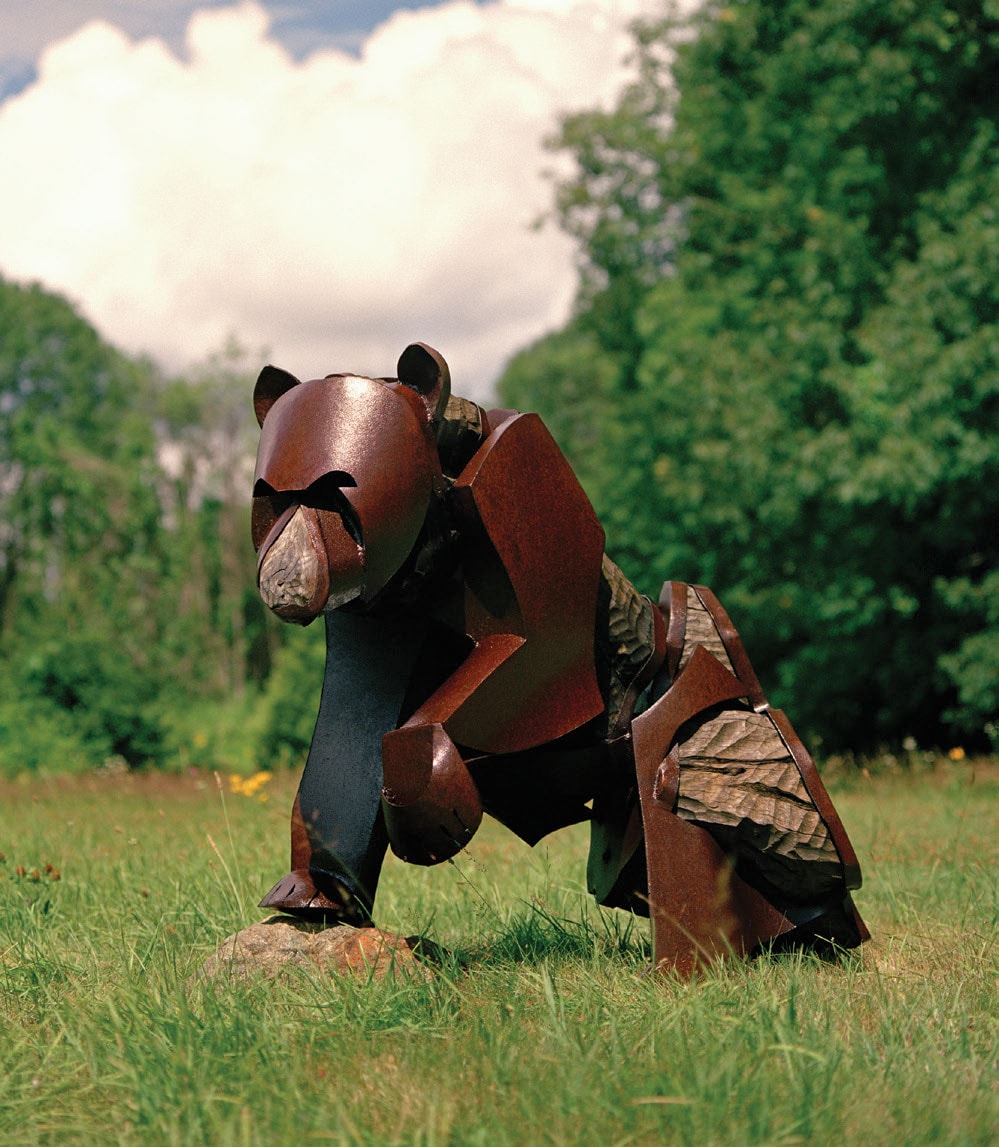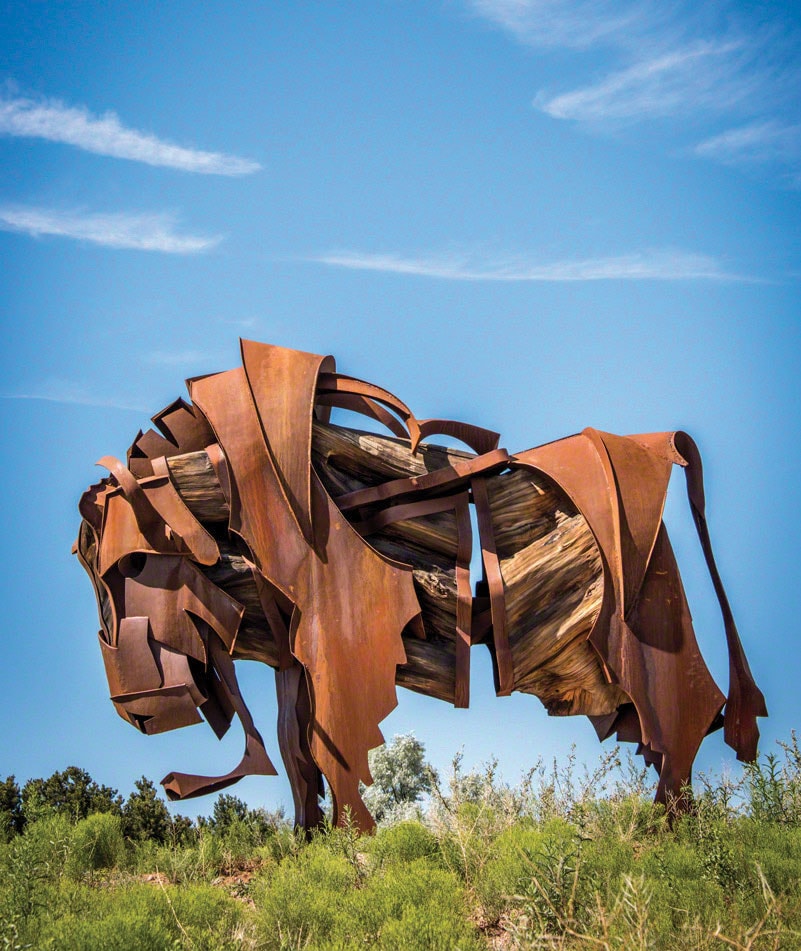
11 Jul Artist Spotlight: Jamie Burnes
Jamie Burnes creates his art through encounters with environmental detritus. The found objects he uses in his sculptures reveal themselves as tree trunks, petrified wood, stones, and other natural materials. It’s the happenstance of life put into form.
“My work is very process-oriented,” Burnes says. “I’m a physical person, and my process involves my discovery of found objects. I’m drawn to the rhythms and textures within those materials. I don’t manipulate the materials very much, other than to cut sections or use pieces of a grain that remind me of what I want to make. Once I compose the sculpture, by laying them out on the ground, I bring them into my studio and start building.”

Tashtego | Steel and Cedar with a Stainless Steel Armature | 53 x 48 x 36 | 2005
Using a stainless steel armature that hangs on a giant gantry, suspending the objects in mid-air, he begins to understand the form. By suspending them, he can move the form, creating a dynamic between shape and composition. “I can get a lot more subtly into the piece that way,” he says. “I don’t know how it’s going to look until it’s up in the air.”
From there, he adds sheets of Corten steel. “I’m drawn to the way the Corten steel ages and rusts,” Burnes says. “It won’t rust away, but you still get the patina which contrasts with the wood and stone. I have worked in other materials. Man-made steel is so process-oriented, I find my whole process to be reversing it, hammering it, and bringing it back to a life-like state on an abstract level.”

Santiago | Steel and Cypress with a Stainless Steel Armature 102x120x48inches|2014
Burnes creates unique pieces without reproducing any of them. With a vast collection of found objects in his studio, he’s open to discovery by waiting for something to speak to him. “I’ll walk by, and something will jump out that should be this or that,” he says. “The exploration of the materials is half the fun, and my process is completely intuitive. I usually have four or five pieces going at once. One can lend itself to the other. If I have a problem, the resolution might pop into my head while working on another project.”
Burnes will often work with a certain location in mind. In that case, he prefers to collect his found objects from the site. A client might have an idea of what they want, or they might tell him about the space they have for the sculpture. He then gathers his materials with that project in his head and creates a proposal.
“If I’m showing groups of work, I try to create a theme,” he says. “I’ve done a few pieces where I used the same tree in each piece, the same logs, so then I would make a variety of animals that work together, maybe a Western theme, a bison, a horse, a jackrabbit, and a steer, or other themes with more abstract compositions.”
 He begins his body of work by considering the vocabulary of found objects, drawn to the tension between the hard-edged human-made lines and the natural surfaces. “I feel it’s a reflection of the hand of man on the planet, combined with all these natural places where we put straight lines,” he says. “We expand into these urban spaces and make everything into grids around the natural world. My work is similar to that … I think of the edges … they frame the natural object within the piece. It’s a layering of material and space, natural versus man-made, to make a different whole.”
He begins his body of work by considering the vocabulary of found objects, drawn to the tension between the hard-edged human-made lines and the natural surfaces. “I feel it’s a reflection of the hand of man on the planet, combined with all these natural places where we put straight lines,” he says. “We expand into these urban spaces and make everything into grids around the natural world. My work is similar to that … I think of the edges … they frame the natural object within the piece. It’s a layering of material and space, natural versus man-made, to make a different whole.”
Burnes will show his sculptures at the Gerald Peters Gallery in Santa Fe, New Mexico, from August 9 to September 28. His site-specific installation will be in Hood River, Oregon, as part of the Riverwalk Sculpture Show for the next two years. His work is represented by Gallery MAR in Park City, Utah; and Gerald Peters Gallery.






No Comments